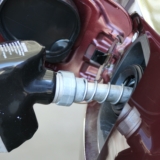The Biden Administration and The High Stakes Tariffs for EVs
In the high-stakes poker game of global economic strategy, the Biden administration is laying down a bold hand. With plans to quadruple tariffs on imported Chinese electric vehicles (EVs) to over 100% by August, Energy Secretary Jennifer Granholm insists this move is pivotal for safeguarding the future of American automakers. This decision, nestled within the broader context of federal subsidies and tax credits, aims to shield the American auto industry from the aggressive encroachment of Chinese giants.
Granholm’s announcement on Tuesday underscores a significant pivot in U.S. trade policy, one that champions domestic manufacturing and labor. The rationale is straightforward: by imposing hefty tariffs on Chinese cars, the administration aims to create a more level playing field for U.S. automakers who are navigating the transition from traditional combustion engines to electric drivetrains. This isn’t just about cars; it’s about jobs, technological leadership, and national economic resilience.
Chinese manufacturers, buoyed by substantial state support and economies of scale, have been able to produce competitively priced vehicles that threaten to outpace their American counterparts. The Biden administration’s tariff strategy is designed to counteract this advantage, essentially erecting a financial barrier to ensure U.S. auto supremacy.
But let’s delve deeper into this poker game. The stakes are not merely economic but geopolitical. China has positioned itself as a formidable player in the global market, leveraging its vast resources and strategic vision. For the U.S., allowing Chinese cars to flood the market unimpeded would be akin to folding in the face of a robust opponent. By raising tariffs, the Biden administration is signaling its intent to not only compete but to dominate the future of mobility.
However, this strategy is not without its critics. Skeptics argue that such protectionist measures could backfire, leading to higher prices for consumers and potential retaliation from China. They warn of a tit-for-tat trade war that could disrupt global supply chains and stall the very innovation the tariffs seek to protect. There is also the risk that American automakers, shielded from competition, might become complacent, reducing the pressure to innovate and improve.
Yet, Granholm and her allies maintain that these tariffs are a necessary gambit. The U.S. auto industry, they argue, is at a critical juncture. Federal EV subsidies and tax credits are part of a comprehensive strategy to foster a robust domestic market for electric vehicles. These measures aim to accelerate the adoption of them, reduce carbon emissions, and spur the development of next-generation automotive technologies.
The broader vision is clear: to establish the U.S. as a leader in the global transition to electric mobility. This vision aligns with the Biden administration’s climate goals and its commitment to reducing America’s carbon footprint. By nurturing a competitive and innovative domestic auto sector, the administration hopes to achieve economic and environmental objectives simultaneously.
The decision to quadruple tariffs on Chinese imports is a bold move in the complex game of global trade and economic strategy. It reflects a broader effort to safeguard American jobs, promote technological innovation, and assert U.S. leadership in the burgeoning market. As we watch this high-stakes game unfold, one thing is certain: the future of the American auto industry, and perhaps the global balance of economic power, hangs in the balance.






